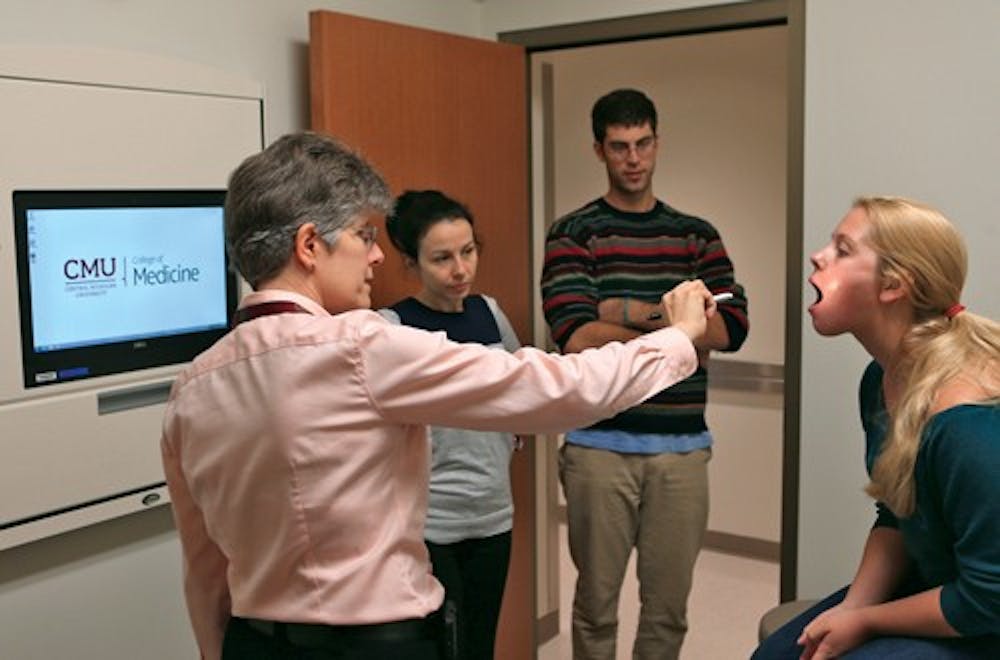Faking it: CMED 'patient' program helps students diagnose illnesses
Growing up, faking sick either got you out of school for a day or in a heap of trouble for attempting it.
But for those hired by the College of Medicine to take part in the Standardized Patient Program, the fine art of faking symptoms of illness is helping students learn, work and interact with real human patients.
Standardized patients are individuals paid by the school to portray a patient with some kind of sickness or other side effect. Students interact with the patient by interviewing them, and diagnosing the disease the patient might have.
“Many students have not had any interactions with real patients in the real world, so this gives the students an opportunity to be face-to-face with somebody, who’s responsive to their questions, facial expressions and how they speak and phrase the questions,” said Nhu Dargis, director of the Standardized Patient Program. “The feedback they receive from the patient is from a different perspective than from what they would receive from an instructor.”
Patients are hired through referral program and are paid $15 an hour to start, though some receive higher pay if they stay in the program long enough. Some patients refuse the pay because they are happy to help the students any way they can.
Before working in the program, they are hired on a temporary basis and go through an extensive training process. This training period teaches them how to mimic symptoms of a disease.
Aside from practicing their interviewing skills, another key focus of the program is to help students learn how to administer physical exams, like taking a patient’s blood pressure, and to familiarize them with potential medical histories.
The training facility for both the students and the patients is a replica of a working doctor’s office, with real medical equipment. Cameras capture the encounter between the students and patients so the footage can be reviewed later by the students and professor.
Nico Conti, a first-year medical student from St. Clair Shores, is in a course titled "essentials of clinical skills," which uses the Standardized Patient Program every other week.
There are two parts to the program, Conti said. The first involves learning how to conduct medical exams from a group of physicians. Next, the medical students practice on each other, administering the examinations throughout the week.
Then students get to work with the standardized patients the following week.
Conti said the program has been beneficial in terms of relating his course work to practical, hands-on skills.
“You retain and remember stuff a lot better when you are taking it out of context, rather than when someone is dictating to you what you should see, or say, or do,” he said. “It helps prepare us for what we will see in the future."
CMED professors share Conti's sentiment, including Meredith Goodwin, associate clinical professor and co-director of the essential clinical skills course block. Goodwin teaches 64 students who use the program.
She teaches a class that uses the program and agrees the experience is much more valuable than learning the same subject matter in a classroom or a lecture hall.
"By working with the standardized patients, we get an objective assessment of the students' abilities," she said. "Everybody is really enthusiastic about the program and the students really like it because it's like being a real doctor"




